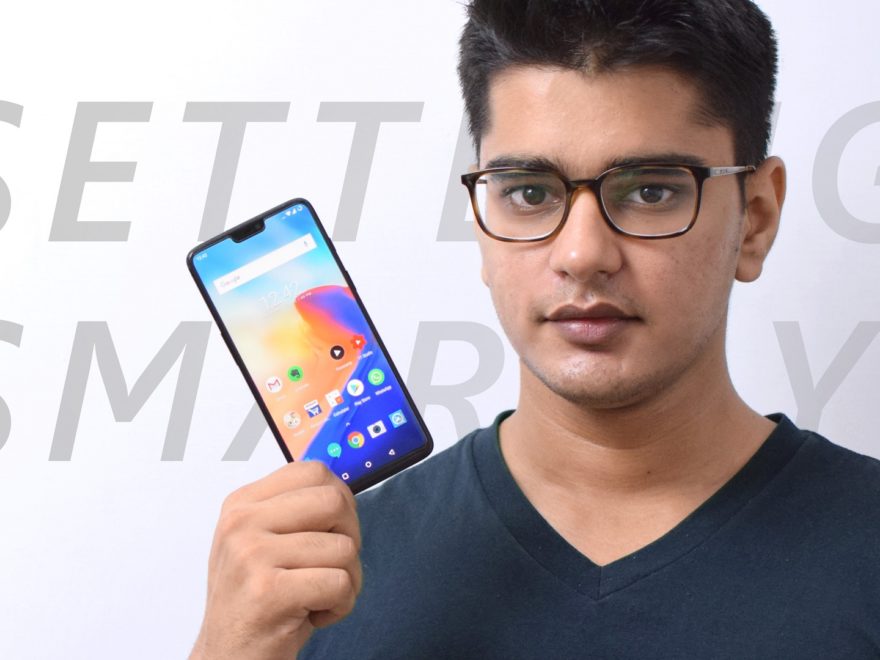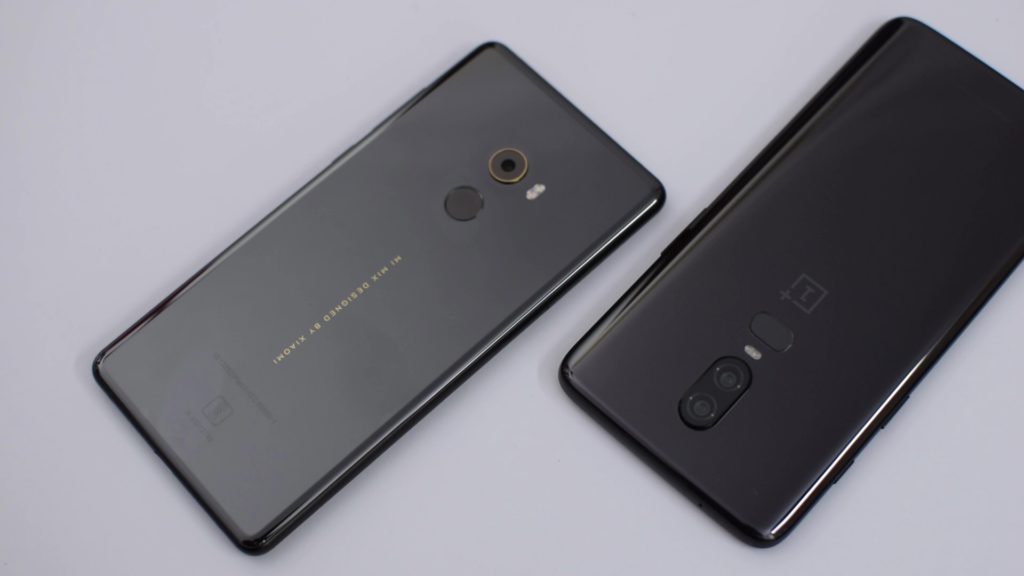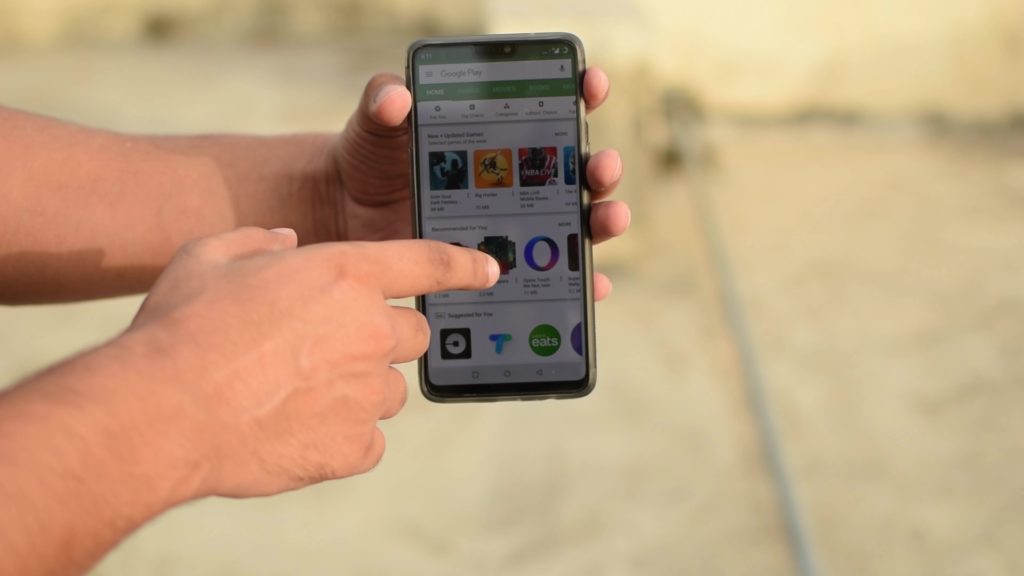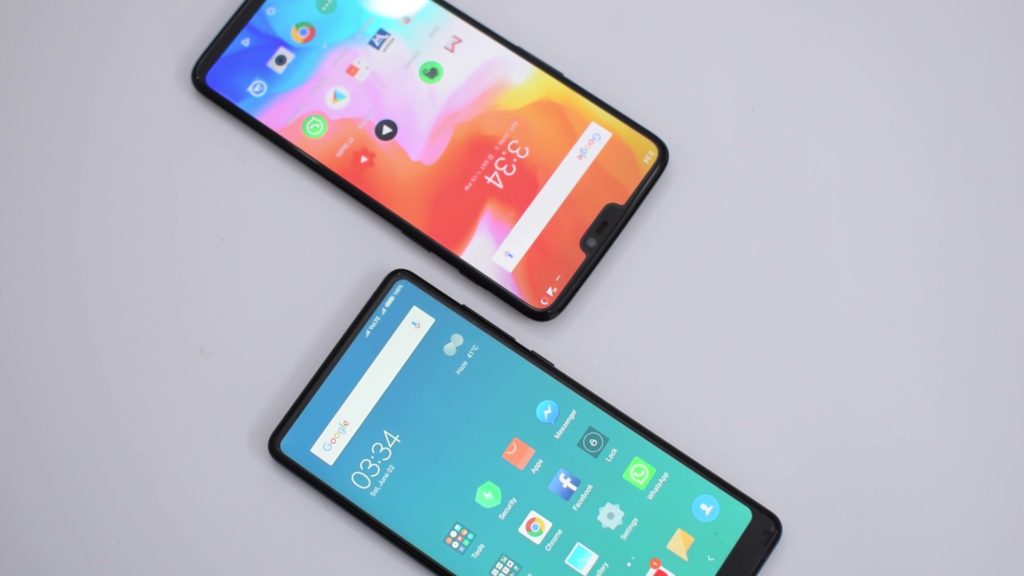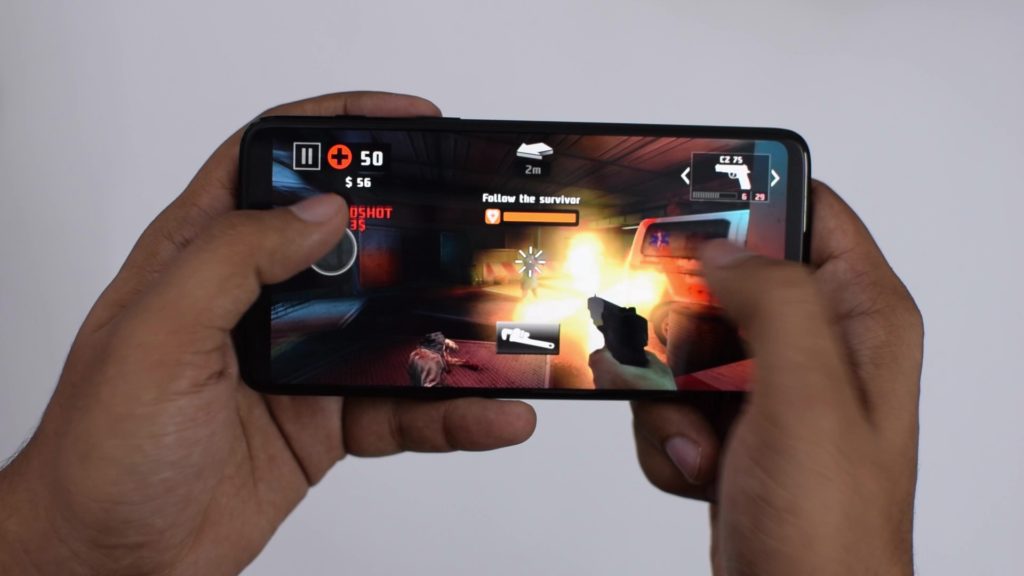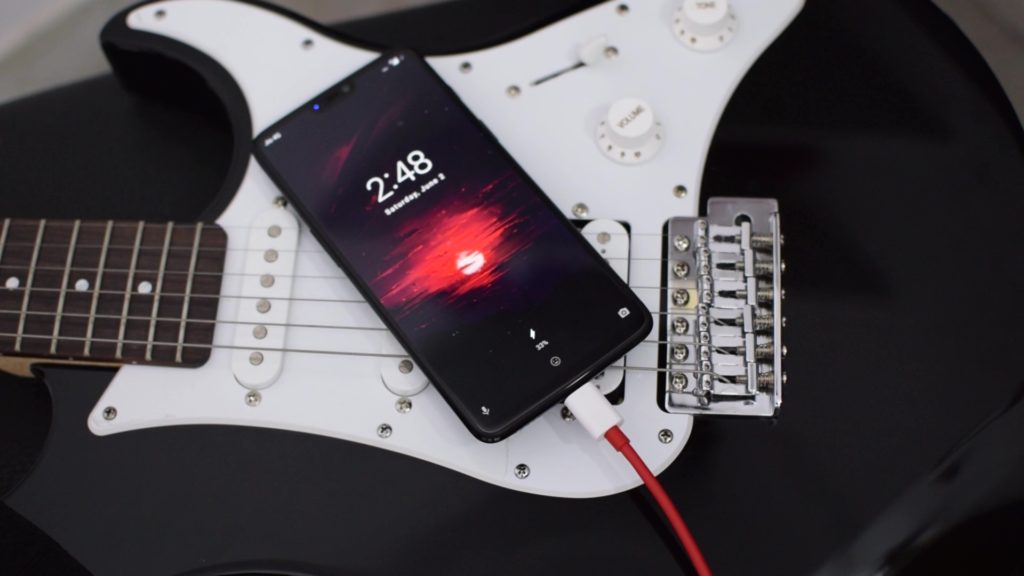OnePlus 6 is a phone that you already know is very good, without watching its reviews. OnePlus phones have got expensive over time, but so have the phones that they compete with. And now even though they aren’t the most affordable ‘flagship killers’, they are certainly most effective at doing so.
So I am sure that it’s unsurprising that there’s a lot to like about this phone, but there are also some areas where it’s not so perfect, and we’re going to talk about that in this video.
DESIGN
OnePlus has switched to a glass back this year, and I really like the design. Even though metal is much more durable than glass, I never really liked the design of the previous phones, because they looked too bland for my taste, but this year’s design makes it feel like a more premium smartphone. The dual camera setup has also been redesigned, and looks better and more premium. It also has Gorilla glass 5 on it’s back instead of generic glass, so it is going to be scratch resistant, but making this phone experience any drops would be a really bad idea. So it’s a nice thing that they include a good TPU case in the box.
It comes in 3 colors, which have different names, but I call them the glossy black, the silky matte black, and the white one.
The different colors do have differences, other than color, so the mirror black version has this film inside which kind of makes it look like ceramic. And the other variants also have different films, and the white version even has crushed pearls.
There’s also a special Avengers Edition, with a carbon fiber finish at back, and gold accents if you’re into that kind of stuff.
The phone weighs 177 grams, but it doesn’t feel heavy, because the shape and weight distribution of this phone is really great. It feels very comfortable and natural to hold in hand, with the curved back, thinner at the edges, and 7.8mm at it’s thickest point. Even though it is a large slippery phone, you feel confident about your grip while holding it, because of it’s shape.
The phone has the nice and tactile volume rocker buttons on the left side, and the power button is on the right side, with an alert slide above it. This slider lets you switch in 3 steps, between ringer, vibrate, and completely silent mode. This feature is unique to OnePlus series, and it is quite useful, but I wish they had some kind of color indication here like iPhones have, also, you could push it all the way to silent if you’re not careful, and it’s not easy to switch between, you may have to use your thumbnail to switch, or hold the phone in a very particular way.
You can also not put the phone on vibrate or silent using the software, you can only do it using the hardware slider. So it is nice to have, but it could use some improvements.
It has a headphone jack at bottom, and I really can’t tell you how happy I am about that coming from a phone without a headphone jack. Even if you have the best wireless headphone available, the headphone jack is an essential that cannot be taken for granted.
The fingerprint sensor on this year’s OnePlus is smaller than the earlier phones. While it doesn’t make using the fingerprint reader any harder, it surely doesn’t feel as good as the circular fingerprint readers.
It’s also very fast, like most phones these days, so it unlocks almost instantly.
People were hoping for an in screen fingerprint reader, which isn’t here, but you can just use double tap to wake, and let the phone unlock instantly using face unlock. And, personally I think the back is the perfect position for fingerprint sensors.
The mono speaker on this phone is loud, but average in quality. It’s fine for dialogues, but not great for anything else, and I wish that they made the ear piece function as a second speaker.
It is a dual SIM phone, with 2 nano SIM slots. No expandable storage here, which I never expected, so I am not disappointed, but make sure that you go for higher storage options if you have any plans to record 4K videos.
DISPLAY
With a 6.3 inch 1080 x 2280 19:9 AMOLED display, covering 84% of the phones front, you get some really great colors, and AMOLEDs have infinite contrast ratio, so you get infinitely dark blacks, even at the highest brightness. This let’s the phone have features like ambient display, and notification display where only the text lights up, which not only looks cool but saves a lot of battery. This panel also gets very bright, and it’s very easy to read even in direct sunlight.
This doesn’t go as dim as I would’ve wanted, so using this at night isn’t as comfortable as some other phones that I’ve used.
OnePlus has stuck to 1080p resolution, instead of 1440p, and I think that it was a perfect choice.
It is a pentile matrix display with a diamond pixel arrangement, so if you’re going to use this for VR, you might find the pixel arrangement to be an issue, and the pixel grid is easier to see if you look at the display very closely, but from a normal operating distance, this panel is perfectly sharp.
This display is also capable of displaying DCI-P3 color space, which is pretty high, you can also have sRGB and other modes so you can choose what kind of colors you like.
The only issue for me is that I find the colors in default mode to be a little over saturated, but when I switch to sRGB or DCI-P3, the color temparature becomes too warm for me, and color temperature can only be adjusted in custom color mode, which is still too saturated for me.
So I really wish OnePlus gave you an option to either adjust the color temperature in sRGB and DCI-P3 modes, or an option to adjust the color intensity in custom color modes. Though, I don’t think most people will find this to be an issue.
So whether you watch movies, play games, or just navigate through the black themed interface, you’re going to get a really great visual experience with this display.
THE NOTCH
let’s talk about the most controversial trend of this year, the notch. Some people really dislike it, others are indifferent, and a few people actually like it
And this notch is actually very interesting for me, because my previous phone was a Mi Mix 2, which doesn’t have a notch, so moving on from a notchless phone to a notched one does kind of feel like a downgrade.
You will see a many reviewers saying that it doesn’t affect them, and that they don’t notice it. But the thing is that it’s actually very noticeable, and t hat’s not going to change over time. Don’t get me wrong though, OnePlus has implemented a relatively narrower notch than their competition, which is nice and makes it less noticeable, but you really start feeling it the moment it hides important information in the status bar. For example, Battery percentage is hidden to make more space for other icons, and the notch also doesn’t leave space to show you your internet connection speed, and you only see these details if you pull down the notification panel, you can toggle between which icons are displayed on the status bar. But as soon as you get more than 3 or 4 icons up there, it hides them. It’s the same story on the left side where you get notifications from your apps.
So this makes the the presence of notch noticeable.
What’s funny is that I didn’t find the notch to be an issue while watching videos like other people, it’s really a very small area at the side of the screen, where you mostly don’t have anything important. But the problem I have with zooming the videos to match the phone’s width is that it’s a 19:9 screen, and if you’re watching 16:9 content, it gets cropped too much from top and bottom, which is something I don’t feel with an 18:9 crop.
Oxygen OS allows you to choose whether an app should be able to access the notch area or not, so you can just not allow your video apps to use the full screen, so the videos will only get cropped to an 18:9 ratio, without the notch. I make the notch inaccessible for video apps and YouTube, and it gives me a perfect experience, the pixels on the sides of the notch also get disabled, so you can hold the phone with the screen in the notch area, because your touches won’t get registered, so that’s really well thought out.
Oxygen OS also allows you to disable the notch in general, which makes it look kind of like a OnePlus 5T, except you get your status bar icons in the corners. This is really neat, and it makes the black notch at the center of a colored status bar lose it’s awkwardness, and the unlit pixels of AMOLED display make the effect seamless, but if you disable it, how are people going to know that you have a 2018 phone?
The phone also has a very short chin along with the notch, which isn’t ideal, but apart from making the phone look aesthetically unbalanced, it’s not an issue.
So yes, the notch isn’t a big deal, but it’s not like you’re not giving up anything by having it in the middle of the status bar. It’s perfectly livable, but not the best thing ever.
There is an LED notification light in the notch, which is multicolored, but isn’t very bright.
OnePlus 6 does not have an official IP rating, but it is fairly water resistant, as people at iFixit have found. So OnePlus doesn’t officially say that the phone is water resistant, but it should be able to handle some rain, or splashes of water, which is water resistant enough for me.
CAMERAS
So OnePlus 5 had two cameras, one of which was a telephoto lens. Then OnePlus 5T had a secondary camera, one of which was better for low light.
But OnePlus 6 has 2 cameras of the same focal length, a 16 MP sensor with f/1.7 aperture, stabilized with electronic and optical image stabilization, and a secondary 20 MP sensor with f/1.7 aperture with no mention of stabilization, because the second camera is only used for depth sensing data for the portrait mode.
I think this was a missed opportunity, and I really would have loved to see a camera with a wider angle as the secondary camera, which only LG seems to be doing.
The camera on OnePlus is an area where you’d be settling a little bit, because this isn’t as good as Galaxy S9+, Pixel 2, or iPhone X. But if you leave the comparison with those phones which cost almost the double of this, the camera is actually very good.
The colors and contrast are fairly balanced, giving you a realistic image, and while there’s plenty of detail, you can see some signs of sharpening if you zoom in. Low light performance is also good with that f 1.7 aperture and larger than average pixel size.
The portrait mode on OnePlus 6 works well, most of the times, you could ocassionally run into problems with the edges or hair, but nothing that the Facebook or Instagram people are going to notice.
It also has a pro mode, which lets you set focus, ISO, shutter speed, and white balance manually, and you can also shoot in RAW for advanced editing. And then there’s the usual set of features like auto HDR, panorama and there’s also beauty mode on both sides to cover your insecurities.
On the video side, the phone can do up to 4K at 60 frames per seconds, which is really great, but one issue I had with 4K and 1080p video, is that when you’re at 30fps, it uses electronic stabilization, which is great, but it has to crop the view, so you’re not able to use the full sensor. This isn’t a problem with 1080p or 4K at 60 fps, as it doesn’t digitally stabilize at 60fps, so if you want to use the full sensor, and have a higher quality or a wider angle, you’d have to shoot at 60 frames per second. The digital stabilization it has is really good, but I wish there was an option to disable that, so people in both camps would’ve been happy, and you could get better quality video at 30 fps if using this on a tripod.
And now this part is being shot by Oneplus 6 instead of my main camera, so you can see what the audio and video quality is like
But that was a 30 fps recording, and now this is a 60 fps recording, which doesn’t have electronic image stabilization, so you can see what the difference is between the quality and the field of view
The video quality otherwise, is very good for a phone, it is limited by physics like every other phone, so you have to have realistic expectations.
You can also do slow motion capture either at 1080p 240 fps, or 720 480 fps. So if you’re into contact sports like me you could have some real fun with it. Note that this was shot in the evening when it wasn’t the brightest, and at a shutter speed of 480th of a second, you’d need a lot of light if you want to get good quality footage. (Watch Video review to see slow motion video sample)
On the front you have a 16 megapixel sensor with f2.0 lens and I am very happy with the image quality, because there’s plenty of detail and a good balance of color and contrast in most situations.
SOFTWARE
Software on the one plus 6 is a… big plus.
With OnePlus, I think you get the best combination of software enhancements, stock android feel, speed, and quick software updates. Android P has significant improvements over Oreo, and OnePlus is one of the few devices that have Android P Beta available for it, and it will also get the final version very soon after it gets released.
Oxygen OS is really great, and all the extra features it has are genuinely useful and they all are integrated seamlessly.
The first thing I generally do on a new phone, is install Nova Launcher, but OnePlus launcher was surprisingly good enough for me to not need it. It has the essential features like gestures and icon pack support, and it also includes this shelf feature, which shows you your frequent contacts and apps, and you can also add widgets to, which makes it a useful add on.
We have OnePlus’s implementation of face unlock, and it works surprisingly well. It’s very fast, it’s accurate enough, and it works even in very low light. And if you enable the Assistive Light function in face unlock settings, it will also light the screen white in low light situations so you can unlock it even when it’s completely dark.
It does face problems, if you wear sunglasses, you might face a delay, or sometimes it may just not work, but other than that it works perfectly. Though, it is not as secure as phones that have dedicated hardware for face unlock.
Having face unlock also makes the gestures in Oxygen OS really efficient, because you don’t have to reach back to the fingerprint sensor after opening an app using the gesture. For example, when the screen is locked, I can make an S on my phone, which will take me to the dialer, but because it has face unlock, I won’t need to unlock it using a pattern or a fingerprint, and I can open any app directly as the first thing that I see after the phone wakes up, which is really cool.
It also let’s you use gestures instead of buttons, which is great, but the problem here is that the stock Android multi tasking screen isn’t designed for gestures, like iOS, or even MIUI, which very successfully copied the iOS interface. So this feels kind of forced. But this phone is going to get Android P soon, which will fix all these issues.
OnePlus has always been about having the best specs available in the given year, and this year is no exception.
It has Snapdragon 845 CPU, the best on the market, with an Adreno 630 GPU, 6 or 8 GB of RAM, with 64,128, or 256 GB of storage.
All of that, combined with near stock Android OS, and a 1080p panel means that the performance is so good, that it’s almost pointless to talk about it.
It will be one of the best performing phones for this year, sharing the spot with the upcoming Pixel 3. And It is an area where it may surpass other flagships from Samsung and LG because they have a heavier OS, with more bloatware.
This is going to play any game that you throw at it as smooth as it is possible for an Android phone at the moment. This of course excels in benchmarks, The UI responds almost instantaneously, and in the time that I have used it, I haven’t encountered any single instance of lag or slowdown, and my phone is the 6 GB version. And I really don’t that that you need that extra 2 GB of RAM over it, but hey, there is no kill like overkill.
BATTERY
OnePlus 6 has a 3300 mAh battery, and combined with a 1080p AMOLED display, the power efficient Snapdragon 845, and near stock Android OS, the battery life is really great. With my moderately conservative usage, I could get up to 7 hours on a single charge, and the standby time is also great, and you could go for a second day without a charge if you didn’t use your phone for a long time.
And then we come to DASH charging, which is the best fast charging technology available, because not only it charges up your phone insanely fast, but it also uses higher amperage, instead of higher voltage, unlike other fast charging technologies, which is great for your battery’s health in the long run.
It charges really fast up to 75%, then it slows down a bit till 90% and then it takes up around 30 minutes to reach from 90 to 100%. this is outstandingly good, and means that OnePlus’s claim of getting a days battery life in half hour is correct.
Many people are disappointed with the lack of wireless charging, but that actually generates more heat, which isn’t the best thing for the battery, and it’s nowhere near as fast as dash charging. So I really don’t miss that.
CONCLUSION
So, to conclude this long review, OnePlus has released a phone, which settles very smartly in a few areas, to deliver an experience that makes it actually better in some areas than the phones which cost much more than it, and you’re really not making any big compromises compared to more expensive flagships. Yes, the screen is 1080p, but that’s is good thing in my opinion, the camera isn’t the best, but it’s not that much worse, it doesn’t have wireless charging or an official IP rating for water resistance, but it is kind of water resistant, and those are very minor compromises when you factor in the price. And the fact that you get one of the best performing phones, with best kind of software, the best fast charging technology, a great design with an AMOLED display and some extra unique features on top of that, the OnePlus 6 becomes a really compelling buy, and one of the best phones to go for this year, and not just because of its price.
But it isn’t all perfect, because OnePlus doesn’t have a service centre in my city,and that is the case with a lot of places in India, and my city (Udaipur, Rajasthan, India) is actually kind of popular, and we have brands like Xiaomi providing excellent after sales service. So their after sales service support isn’t as widespread, and while they have great after sales service in many areas, there are a lot of areas where people are very upset about their service .That being said, I do have some people in my city, who have OnePlus devices, running fine for 3-4 years, so I don’t have doubts about the longevity of their devices.
coming to whether you should upgrade to it, I think that if you already have a phone with Snapdragon 820 or above, and you don’t have issues with its performance, then you don’t need to upgrade to OnePlus 6, but if you’re planning to buy it, you can be sure about getting the complete worth of your money.
